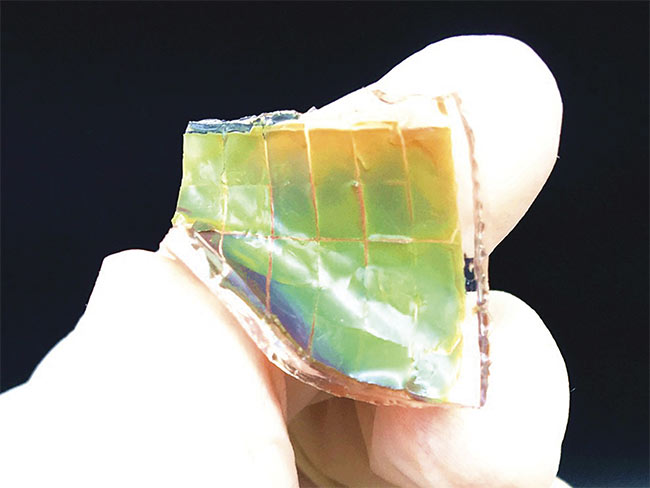Calling someone a “chameleon” is generally considered a pejorative. When referring to shifting colors in applications of science and medicine, however, it may be a different story, thanks to a team of researchers who have been studying — and attempting to replicate — the optical attributes of a chameleon’s skin.
For years, scientists have been working to mimic the ability of species such as chameleons and neon tetra fish to change color and either blend into their surroundings or stand out to a potential mate in the wild. A similar optical effect can be found in some butterfly wings and even peacock feathers. But until recently, success at reproducing this effect eluded science’s grasp, much like a chameleon escaping detection. However, as was recently reported in ACS Nano, a group of researchers has created a flexible “smart skin” that changes colors when triggered by heat and sunlight. Their work was supported with grant funding from DARPA’s Biological Technologies Office and the National Institutes of Health.

Inspired by chameleon skin, this flexible material changes color
in response to heat and light. Adapted from ACS Nano 2019, www.doi.org/10.1021/acsnano.9b04231.
As it turns out, chameleon skin is dependent not on pigment, but on a collection of very small photonic crystals, which reflect light and produce a color. The light changes based on the density of the crystals, an effect that is created when the animal tenses or relaxes, its skin shifting accordingly. Scientists built upon this phenomenon in nature and attempted to reproduce it in the laboratory, adding photonic crystals to flexible materials such as hydrogels.
One downfall of this process is that continuous expansion and contraction can degrade the materials used. But as was learned by professors and doctoral students from Emory University and Georgia Tech during the course of their study, in actual chameleon skin, crystals appear in only a small percentage of skin cells, with the rest essentially colorless. Shifting their efforts on their material, then, the researchers used magnets to arrange arrays of the crystals, which were made of iron oxide in some areas. They also built a spongy, support layer into the hydrogel. This did the trick; as the skin responded to heat and light, it basically retained its form after being arranged in the shape of a lizard, fish, or leaf. The material was placed in sunlight for 10 minutes, and it changed from orange to green without changing size.
The researchers said that while fabrication of the hydrogel for practical uses in industry and medicine remains on the horizon, their initial success could one day lead to applications that take many forms, from camouflage and chemical sensing to anti-counterfeiting efforts.